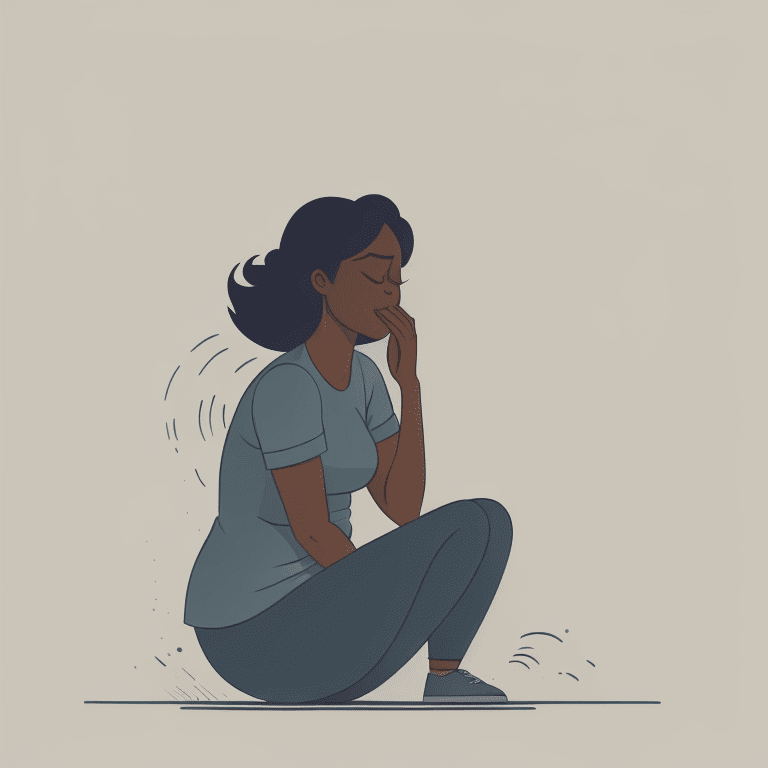Do you sometimes feel like you can’t breathe?
If so, you may be suffering from an oxygen allergy.
Oxygen allergies are relatively rare, but they can be very serious.
- Today let’s discuss the symptoms of oxygen allergies and how to treat them. We will also provide tips for avoiding exposure to oxygen allergens.
It is possible to have an oxygen allergy because our body’s immune system can mistakenly identify oxygen as a harmful substance, and react by releasing histamines into the bloodstream.

An oxygen allergy, also known as oxygen anaphylaxis or oxygen hypersensitivity, is a very rare condition where an individual experiences an allergic reaction when exposed to concentrations of oxygen greater than what is normally in the air.
It is caused by the activation of the immune system by oxygen.
6 key facts about oxygen allergies:
- Symptoms can include difficulty breathing, coughing, headache, rash, chest tightness, and swelling in the mouth and throat. Reactions can range from mild to potentially life-threatening.
- It seems to be triggered when oxygen levels rise too quickly – from 21% in room air to 50% or greater in supplemental oxygen. Lower, more gradual increases may be tolerated.
- Very few cases have been reported. Those afflicted seem to already suffer from severe lung diseases like asthma or emphysema.
- The exact mechanism is unclear but may involve the formation of abnormal antibodies that mistakenly identify oxygen as a harmful foreign substance.
- Treatment focuses on avoiding supplemental oxygen and rapid oxygen increases. Steroids may help suppress the overactive immune response.
- It does not mean the body cannot use oxygen properly – only that the immune system reacts adversely to high concentrations.
While very uncommon, an oxygen allergy can prevent individuals with severe respiratory disease from using supplemental oxygen, complicating their treatment.
More research is needed on this rare condition.
Explain it to a child
An oxygen allergy is when the body does not like oxygen. This happens when there is a lot of oxygen around. The most common problem is that it is hard to breathe. This can happen very quickly after being exposed to oxygen.
These histamines trigger the symptoms of an oxygen allergy – such as red, itchy eyes, a runny nose, and sneezing.
There is no cure for an oxygen allergy, but there are treatments that can help relieve the symptoms.

You may need to take antihistamines or nasal decongestants to ease your symptoms.
You may also need to avoid exposure to allergens that trigger your reaction.
What is an oxygen allergy?
An oxygen allergy is a condition in which the body reacts to oxygen, typically when it is inhaled at high concentrations.
The most common symptom is shortness of breath, which can occur within minutes of exposure to oxygen.
Other symptoms of an oxygen allergy may include:
- Coughing
- Wheezing
- Chest Tightness
- In severe cases, anaphylaxis may occur
An oxygen allergy is thought to be relatively rare, affecting only a small percentage of people.

However, it is more common in certain populations, such as scuba divers and those with chronic lung conditions.
There are two main types of treatment for an oxygen allergy: avoiding exposure to oxygen and desensitization.
Desensitization involves slowly increasing the amount of oxygen that is inhaled over the course of several weeks.
This can help the body to build up a tolerance to oxygen and reduce the severity of reactions.
Symptoms of an oxygen allergy
Symptoms of an oxygen allergy include coughing, wheezing, shortness of breath, and difficulty breathing.

- These symptoms can be caused by exposure to oxygen tanks, breathing in high concentrations of oxygen, or using oxygen therapy.
- People with an oxygen allergy are more likely to have these symptoms when they are exposed to high concentrations of oxygen, such as in an oxygen tank.
- Symptoms can also occur when people use oxygen therapy, which is a treatment that delivers oxygen to the lungs through a mask or nasal cannula.
- Symptoms typically resolve within minutes after stopping exposure to high concentrations of oxygen.
- However, some people may experience more severe reactions, such as swelling of the throat or tongue, hives, or difficulty breathing.
These reactions can be life-threatening and require immediate medical attention.
Treatment for oxygen allergies
Treatment for oxygen allergies typically involves a combination of medication and avoidance of exposure to oxygen.
- Medications used to treat oxygen allergies include antihistamines, steroids, and bronchodilators.
- Antihistamines work by blocking the action of histamine, which is a chemical that helps to trigger an allergic reaction.

Steroids work by reducing inflammation, while bronchodilators help to open up the airways.
Avoiding exposure to oxygen may involve using a home oxygen concentrator with a lower output or avoiding activities that require high levels of activity such as exercising.
In severe cases, a person may need to be hospitalized in order to avoid exposure to oxygen.
Treatment for oxygen allergies is important in order to prevent serious reactions.
How to avoid exposure to allergens
One of the best ways to avoid exposure to allergens is to keep your home clean and free of dust.
Dust mites are one of the most common indoor allergens, and they thrive in cluttered, dusty environments.
To reduce the number of dust mites in your home, vacuum regularly and dust with a damp cloth.
- You should also wash bedding in hot water at least once a week.
- In addition, keep pets out of the bedroom to further reduce allergens.
- If you’re allergic to pollen, try to stay indoors on days when pollen counts are high.
- You can also wear a respirator or face mask when you go outside.
- Finally, remember that Allison and other fragrances can trigger allergies, so avoid using scented products in your home.
By taking these simple steps, you can dramatically reduce your exposure to allergens and improve your allergy symptoms.
- In conclusion, oxygen allergies are rare but serious.
If you think you may be suffering from an oxygen allergy, see your doctor for diagnosis and treatment. And remember to avoid exposure to allergens that trigger your reaction.
Article Sources
Jacks of Science sources the most authoritative, trustworthy, and highly recognized institutions for our article research. Learn more about our Editorial Teams process and diligence in verifying the accuracy of every article we publish.
